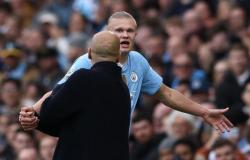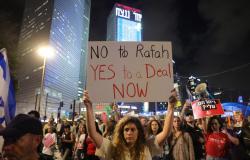In celebratory speeches, the association’s vision of “Football for all” is often highlighted. Most people will probably nod approvingly at that slogan, whether it’s at Montebello or at Mortensrud.
That is why it becomes so painful to document how poorly the map matches the terrain in the capital.
What emerges in VG’s article series “The divided football city” has engaged far and wide. The differences in football even reach the Storting’s Question Time.
It arouses strong emotions when a basic sense of justice is put to the test. The whole unifying idea of football is challenged if the size of the parents’ wallet means far too much for the kind of football offer the children get.
It is undoubtedly a problem that the eastern edge has too few surfaces, too little winter heat and that less money in circulation can be spent on the sporting scheme. Holmlia leader Aram Meradi has put this despair into words.
It is also easy to get upset that Ullern is hunting twelve-year-olds, or that staggering training quotas can seem exclusionary even in more resourceful areas.
It is equally important to keep one’s tongue straight in one’s mouth about where the really big problems lie. It’s not in the west end clubs.
It is not illegal to have ambitions, and it is difficult to blame environments for making the best possible arrangements. Moreover, it is not the case that all is joy and gloom west of Akerselva either.
Not everyone has Heming standards at their sports facilities, to put it nicely.
An equally relevant perspective as “east versus west” in Oslo is to look at how weakly the capital as such comes out on the construction side, compared to parts of the country with lower land pressure.
One of the biggest problems surrounding the construction crisis is that everything is so complex, and with so many actors involved, that it is impossible to snap one’s fingers and correct the biases. Moreover, the theme is not limited to football at all. A number of indoor sports also have problems with solitaire.
One of the problems is that sports policy all too rarely receives sufficient attention from the elected officials. When was the theme setting the tone in an election campaign, for example?
Everyone agrees that sport is the glue in society, but the challenges of the country’s largest popular movement normally receive little attention in the public sphere.
Perhaps it is connected with how Norwegian sport is organized and financed. There are positive aspects to gambling funds being the backbone of public support, as it provides predictability. At the same time, something is lost.
If sport had to a greater extent been a regular item on the state budget, sport would have been discussed to a much greater extent when prioritizing funds. It would have provided an opportunity to better clarify where the shoe presses.
Moreover, there is a gap between what is local and what is a more general concern. In Oslo, the cooperation between the municipality and the sports movement is absolutely crucial.
There are also both positive and negative aspects to the sports association being self-governing so far, even though so much of the funds come from the community. Then there is a danger that the granting authorities will not get close enough to the problems in everyday life.
In addition, the housing pressure in Oslo is so extreme that conflicts quickly arise between the needs of sports and other considerations when the development of the city is to be planned. How can you make it clear enough how important it is to have enough sports facilities?
What must be extra frustrating is that research shows that it is actually socially beneficial to invest in sports facilities.
A survey from Vista Analyse, which was presented during Arendal Week in 2022, showed that society as a whole gets a threefold return for every kroner invested. It also documented how important the facilities are for young people’s physical activity.
No one will disagree that sport is important for public health and integration, but it is a long way from there to get the facility situation good enough.
In an unclear landscape, there is fortunately something that can be done to improve the situation somewhat. Something that should be a high priority is expanding and developing support schemes in less well-resourced environments, so that children can participate even if their mother and father are struggling to pay the dues. In addition, it is necessary to further intensify the cooperation between the sports players and public bodies at different levels.
None of this is going to correct the biases overnight, and it is an illusion to think that everything is going to be equal.
The world is unfair, resources are unevenly distributed. As in the rest of society, it will always be noticeable in sport as well.
Still, there is room for improvement here.
Then it must be about rearmament in the East, not reduction in the West.
Tags: Strengthen East Dont choke west
-






